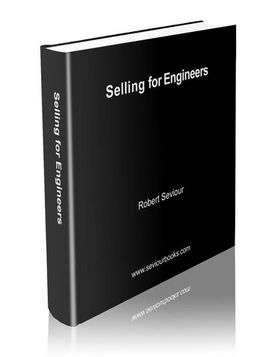Articles on Selling by Robert Seviour
How to set sales appointments on the phone
Phone, a notepad and a pen which works, a computer running a contact-manager program and a source of prospects.
Nice, but not essential, a recording system and a headset.
Method
If you are working from a paper-based source of prospects make a
mark by the record you are about to call, then dial the number.
This is what I say, adapt your script as needed. 'Good morning, my name is Robert Seviour. Do you have a Sales Manager?' (substitute the job-title / function you are looking for).
'Can I get his / her name please?' Then, 'Can you put me through?'
This is the point where you may encounter the first objections, but there are techniques to deal all of them.
Assuming that you are connected.
'Good morning, my name is Robert Seviour, I run sales training sessions for companies like yours, is there anybody in your company who might benefit from some sales training?'
Keep your opening remark brief, explain promptly what you are calling about and ask a question which is designed to pique curiosity.
Assuming that some interest is expressed.
'Are you the right person for me to be talking to?'
Assuming that they are (if not, ask who is).
'I'd like to send you some
information about what I do. Would that be ok?
What's your email address?
I'm going to send it now and I'll call you back in an hour or so to
make sure that you got it. Would that be ok?'
This isn't going to work every time. But the point of emailing something is that if the message you send, or the website you direct the prospect to is good, you will enhance your credibility. This approach doesn't tie people up too long on the phone either. You also have a reason to call back, at which point you can see what the level of interest is and set an appointment if appropriate.
Now send your message. It should be focus on 'benefits' for the customer. Don't make it too long – because it won't all get read. And don't answer every question – leave something for the customer to ask about.
Phone back later that day and ask, 'Did you get my email, have you had a chance to read it, does this look like something that would be relevant for your company?'
(The word 'relevant' seems to be a good one to use – give it a try).
The answers you can get can be classified under three headings.
1. 'No we don't need it and never will.'
2. 'We don't need it now, but stay in touch.'
3. 'I'd like you to come in and see us.'
You will get some of each of these if you make enough calls.
Enter the details into your contact manager program as you go. Make sure you have a 'next contact date' field. As time goes by, you will have a lot of prospects to call back, so the first task in the morning is to sort your contacts by this field, review your notes and make the calls.
I suggest doing no more than 4 hours of this task at a time. Otherwise, you may find it hard to manage to repeat the same phrases coherently.
This is the beginning stage of the 'sales funnel'. Make 20 to 30 calls and you will definitely be able to set some appointments and a proportion of those will convert into sales.
Do it every day and by the end of the month, there will be a nice pay cheque for you.
If you enjoyed this article, take a look at my book.
About the Selling for Engineers Manual
More articles on better selling
Questions/comments - drop me a line at
![]()
